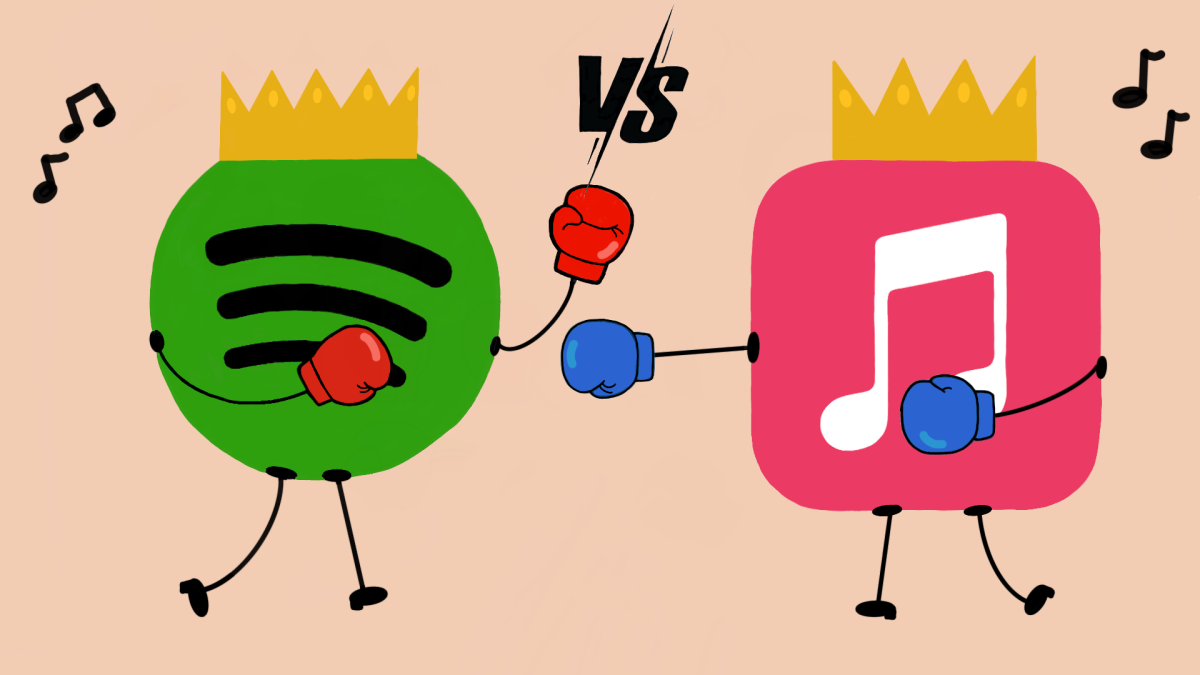
The Great Debate: Did the Supreme Court make the right decision regarding Affirmative Action?
Dea Gupta, Contributing Writer
The college application season can be an extremely stressful process, especially for those deadset on being admitted to a certain school. For one student, attending an Ivy League was his ultimate goal, and he would do whatever it took to get admitted. His methods, however, were rather unprecedented. He submitted two applications to that university, each precisely the same, down to the courses, grades and even essays. The only difference in the applications he submitted was his race.
When the decisions came around, the student was surprised to discover that one of his applications had been rejected and the other had been accepted. While this example is hypothetical and highly exaggerated, the premise behind the student’s unorthodox results was more common than one would expect.
When the Supreme Court overturned affirmative action last June, the decision seemed unfair at first glance; one’s race had some effect on their life experiences so it seemed reasonable that it should affect how a college views an applicant. However, upon further examination, the decision affords an opportunity for universities to improve their procedures for fairly including people of color in the admissions process.
As Chief Justice John Roberts worded it, “[Universities have] concluded, wrongly, that the touchstone of an individual’s identity is not challenges bested, skills built, or lessons learned but the color of their skin. Our constitutional history does not tolerate that choice.” The fundamental purpose of a university is to educate and nurture future leaders. One’s race does not directly relate to the power of their potential contributions to society; their growing intellect, unprecedented out-of-the-box thinking and innate character do. Preventing the association of race to a university’s holistic review of someone based on what they’ve achieved in their lifetime places a higher emphasis on their individuality and how likely they would be to continue that success later in their education and future careers.
In fact, an argument could be made that without the system of using affirmative action, other, more effective, methods could be used to ensure racial diversity in higher education. Schools in California, specifically the University of California system, completely banned the inclusion of race in their applications in 1996. Instead, they expanded the set of high schools they visited, the types of students they reached out to, and improved upon their auto admitting system. For the high school students with the top 9% of GPAs in high school, the University of California schools offered them a guaranteed spot at a school within the UC System. By pulling the top students from every school in California, the UC’s are effectively including students with many different types of racial diversity, as schools in California are very ethnically diverse. So, with the banning of affirmative action, colleges could be motivated to pursue a system similar to the UCs to secure racial diversity in universities. One specific example of this would be the decreased reliance of standardized testing, which has proven to disadvantage people of color.
For those prospective college students who still feel as though their experiences with race have affected their identity strongly and feel as though their college application would not be complete without it, there are still opportunities for those to express themselves. Many universities, in addition to using the Common Application Essay, have supplemental essays that students must complete. Discussing one’s experiences in these essays would be a way for them to use their race’s impact on their identity to prove why they belong at that certain university. Indeed, one of the seven prompts to choose from is: “Some students have a background, identity, interest, or talent that is so meaningful they believe their application would be incomplete without it. If this sounds like you, then please share your story.” This process would allow for their race to have a much larger impact on their application prospects than it does in the status quo.
A study of 150,000 applicants of the six Harvard College classes from 2014 through 2019 conducted by Harvard University on how Harvard University evaluates its applications showed that “The most important was the ratings assigned each applicant based on their academic achievements and other key factors, at 38 percent. The smallest was the tip, or plus factor, for race, at 0.2 percent – or 1/190th as significant. Among the top 10 percent of applicants assessed in the Harvard case, measured by grade point averages and standardized test scores, Harvard rejected more than two-thirds of the Latino applicants and half of the black applicants.” Race was shown to have a minuscule impact on the applicant’s chances, compared to other aspects of their application, such as their essays or their test scores. In regards to the diversity at Harvard University, affirmative action didn’t have an effect compared to every other part of one’s application, proving that it was not needed.
Affirmative action, in general, initially served as a stepping stool for those whose race disadvantaged them from succeeding in the college admissions process. However, in light of more effective methods that would ensure that one’s race would have a beneficial impact on one’s university decisions, it seems that affirmative action itself is no longer needed in the status quo. Its removal by the Supreme Court allows for colleges to direct their attention to other problems causing the systemic racism in the system, equalizing everyone’s chances at being accepted into their desired school.
Riya Mahanta, Editor-in-Chief
The Supreme Court’s recent 6-3 decision to prohibit race as a factor in the college admissions process completely undermines the progress our country has made in increasing equitable access to higher education for everyone and promoting diversity on college campuses to reflect the corresponding diversity of our nation’s population.
Beginning in the late 1960s, affirmative action was an essential tool colleges and universities used in fostering diverse campuses and it deserves to stay. Throughout American history, prestigious colleges and universities primarily catered to affluent, predominantly white individuals. It was only in the 20th century, as the result of an executive order stemming from the Civil Rights Movement, that academic institutions took deliberate steps through affirmative action to embrace diversity and broaden accessibility.
In the dissent, Justice Sonia Sotomayor noted that the decision “rolls back decades of precedent and momentous progress. It holds that race can no longer be used in a limited way in college admissions to achieve such critical benefits,” and that “the Court cements a superficial rule of colorblindness as a constitutional principle in an endemically segregated society.” The notion that America can go “colorblind” implies that there are no more inequalities between people of different races, which is far from the truth.
In contrast to what many think, affirmative action policies don’t just benefit minorities; they benefit everyone. Diversity on college campuses enriches educational experiences of individuals of all backgrounds. Research conducted by the Century Foundation indicates that classrooms with racial diversity can decrease students’ racial prejudices, boost their intellectual self-confidence and elevate their leadership capabilities. These advantages will lead to improved economic prospects and, among other advantages, equip students to thrive in an increasingly diverse society and global economy.
Some say that income is more directly related to the hardships in one’s life and should be considered in place of race. However, race-based affirmative action promotes diversity in a way that income alone can not. While income should certainly be a component in the comprehensive assessment of applicants, it should be a supplementary factor rather than a replacement of the consideration of race. Income can provide valuable insights into a household’s capacity to cover regular expenses, but it doesn’t provide a complete picture of economic welfare and access to higher education, such as generational wealth, for example. Moreover, using the consideration of income in place of race would hurt deserving middle class students of color who still face the same historical injustices as the members of their race with lower incomes.
People argue that race consideration gives minorities an unjust advantage over white and Asian Americans, when in reality other factors give an unjust advantage in the college application process. It is no secret that colleges and universities give preferences to prospective legacy students, the children of alumni and even athletes without the academic credentials typically needed to grant them admission, so why aren’t we stopping those practices? The infamous 2019 college admissions scandal involving actress Lori Loughlin highlighted how children from affluent families use both legal and illegal means to get accepted into higher education institutions.
The notion that affirmative action creates opportunities for unqualified individuals is rooted in ignorance. Affirmative action is not intended to replace any other qualified individuals but rather acknowledges that diversity typically enhances a group’s effectiveness in fulfilling its purpose; diversity should be a factor in evaluating qualifications for admission. Affirmative action does indeed change the playing field. It levels it.
While there are other ways for an individual to talk about their race on their college applications such as through the Common Application Essay or supplemental essays at some colleges, these too may be eliminated. Chief Justice Roberts, who voted in the majority, wants to stop these essays, decreeing that “Despite the dissent’s notion to the contrary, universities may not simply establish through application essays or other means the regime we hold unlawful today….What cannot be done directly cannot be done indirectly.”
Colleges and universities have been encouraging applicants to find a way to make their race part of their application, if they see fit, and recognize the importance of using race as one of many admissions factors, but Roberts believes even that is not allowed. Despite significant advancements in recent years, students from underrepresented racial backgrounds continue to be inadequately represented in colleges across the nation. For example, according to the Census’ 2021 American Community Survey, 26% of Black residents aged 25 or over had earned a bachelor’s degree or higher, while the national rate of all American residents was 38%.
Emphasizing diversity and implementing admission policies that consider race are essential for advancing fairness in higher education and in wider society. Diversity introduces students to fresh perspectives and thought processes, equipping them to thrive in our increasingly diverse nation while fostering mutual understanding and respect across diverse backgrounds.
Diversity on college campuses is not achieved through quotas. Nor does diversity justify or warrant admission of unqualified applicants. However, the diversity we seek and the future of the nation do require that colleges and universities continue to be able to reach out and make a conscious effort to build healthy and diverse learning environments. The success of higher education and the strength of our democracy depend on it.
Do think the Supreme Court made the right decision regarding Affirmative Action?
Sorry, there was an error loading this poll.
A donation of $40 or more includes a subscription to the 2025-26 print issues of The Harbinger. We will mail a copy of our fall, winter, spring and graduation issues to the recipient of your choice. Your donation supports the student journalists of Algonquin Regional High School and allows our extracurricular publication to purchase equipment and cover our annual website hosting costs.










